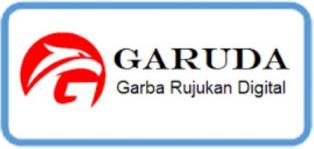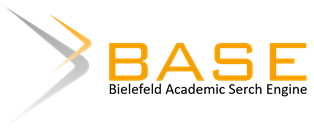Analisis Efektivitas Pembelajaran Berbasis Proyek di SMK 2 Pariaman: Studi Kasus dalam Pengajaran Animasi
 ), Wiki Lofandri(2), Bayu Ramadhani Fajri(3),
), Wiki Lofandri(2), Bayu Ramadhani Fajri(3), (1)
(2) Universitas Negeri Padang
(3) Universitas Negeri Padang
 Corresponding Author
Corresponding Author
DOI : https://doi.org/10.24036/voteteknika.v12i4.131192
Full Text:
 Language : id
Language : id
Abstract
Penelitian ini mengkaji efektivitas metode Project-Based Learning (PBL) dalam meningkatkan keterampilan animasi siswa di SMK N 2 Pariaman. Melalui pendekatan Thematic Analysis, penelitian ini melibatkan 10 narasumber yang terdiri atas siswa, guru, profesional animasi, dan alumni, untuk menggali pandangan dan pengalaman mereka terkait penerapan metode ini. Lima tema utama yang diidentifikasi sebagai pendukung keberhasilan PBL adalah kerjasama tim, alur kerja, manajemen proyek, keterampilan teknis, dan kreativitas. Data dikumpulkan melalui wawancara mendalam yang dianalisis menggunakan tahapan sistematis sesuai panduan Braun dan Clarke (2018). Hasil penelitian menunjukkan bahwa PBL berkontribusi signifikan dalam meningkatkan keterampilan teknis, kemampuan kerjasama, serta kreativitas siswa, yang sangat relevan dengan kebutuhan industri animasi. Penelitian ini merekomendasikan evaluasi kurikulum secara berkala untuk memastikan pengalaman praktis yang diterima siswa lebih optimal dan sesuai dengan standar industri. Selain itu, implikasi dari penelitian ini dapat digunakan oleh institusi pendidikan vokasional lainnya untuk mengadopsi metode PBL dalam menciptakan pembelajaran berbasis praktik yang mendukung kesiapan kerja siswa di dunia industri kreatif.
Kata kunci : Project-Based Learning, Pengajaran Animasi, SMK, Keterampilan Teknis, Kreativitas.
This study examines the effectiveness of the Project-Based Learning (PBL) method in enhancing animation skills among students at SMK N 2 Pariaman. Using a Thematic Analysis approach, the research involved 10 participants, including students, teachers, animation professionals, and alumni, to explore their perspectives and experiences with the implementation of this method. Five key themes identified as contributors to the success of PBL are teamwork, workflow, project management, technical skills, and creativity. Data were collected through in-depth interviews and analyzed systematically following Braun and Clarke’s (2018) guidelines. The findings indicate that PBL significantly improves students' technical skills, collaboration abilities, and creativity, which are highly relevant to the needs of the animation industry. This study recommends regular curriculum evaluations to ensure students gain optimal practical experiences aligned with industry standards. Furthermore, the implications of this research can be applied by other vocational education institutions to adopt PBL methods, fostering practice-based learning that enhances students’ readiness for careers in the creative industries.
Keywords: Project-Based Learning, Animation Teaching, Vocational School, Technical Skills, Creativity.
References
S. S. Alwasilah, “Creating your animated stories with plotagon: Implementation of project-based learning in narrative writing,” Int. J. Learn. Teach. Educ. Res., vol. 18, no. 12, pp. 333–349, 2019, doi: 10.26803/ijlter.18.12.19.
T. Sefton, K. Smith, and W. Tousignant, “Integrating multiliteracies for preservice teachers using project-based learning,” J. Teach. Learn., vol. 14, no. 2, pp. 18–32, 2020, doi: 10.22329/jtl.v14i2.6320.
R. Winaldi, M. Yusup, and R. Fauzan, “The Use of Android-Based Learning Applications to Improve Students’ Learning Outcomes in Vocational High School During the COVID-19 Pandemic,” J. Tech. Educ. Train., vol. 12, no. 2, pp. 56–67, 2020.
A. Patete and R. Marquez, “Computer animation education online: A tool to teach control systems engineering throughout the COVID-19 pandemic,” Educ. Sci., vol. 12, no. 4, p. 253, 2022, doi: 10.3390/educsci12040253.
K. Ratnawati, M. Hariyadi, and S. Ahmad, “The Effectiveness of Using Animation Video Media in Teaching Learning Cycle Learning Model,” J. Phys. Conf. Ser., vol. 1563, no. 1, p. 12068, 2020, doi: 10.1088/1742-6596/1563/1/012068.
K. Snepvangers and A. Rourke, “Creative practice as a catalyst for developing connectedness capabilities: A community building framework from the teaching international students project,” J. Int. Students, vol. 10, no. Special Issue 2, pp. 17–35, 2020, doi: 10.32674/jis.v10iS2.2762.
H. Cevahir, M. Özdemir, and M. H. Baturay, “The effect of animation-based worked examples supported with augmented reality on the academic achievement, attitude and motivation of students towards learning programming,” Particip. Educ. Res., vol. 9, no. 3, pp. 226–247, 2022, doi: 10.17275/per.22.63.9.3.
S. Purwaningsih and A. A. Anggraeni, “Developing an engaging whiteboard animation video for vitamins,” J. Phys. Conf. Ser., vol. 2111, no. 1, p. 12025, 2021, doi: 10.1088/1742-6596/2111/1/012025.
Wahyudin, Munir, M. Nursalman, Y. Wihardi, and E. A. Nurdin, “Using Animated Multimedia in Computer and Basic Network Subject,” in Proceedings of the 7th Mathematics, Science, and Computer Science Education International Seminar, MSCEIS 2019, 2020. doi: 10.4108/eai.12-10-2019.2296502.
S. C. Wibawa, D. Wahyudin, and Y. Nugraha, “The use of interactive animation videos to improve students’ understanding of learning materials,” J. Educ. Learn., vol. 13, no. 3, pp. 346–353, 2019.
I. Hersulastuti, H. Wahyudin, and Z. K. Prasetyo, “The Effect of Using Blended Learning Media Based on Moodle on Students’ Achievement in Linear Program Material in Senior High School,” Int. J. Sci. Technol. Res., vol. 8, no. 10, pp. 2884–2887, 2019.
K. Binowo and A. N. Hidayanto, “Discovering Success Factors in the Pioneering Stage of a Digital Startup,” Organizacija, vol. 56, no. 1, pp. 3–17, Feb. 2023, doi: 10.2478/orga-2023-0001.
V. Clarke and V. Braun, “Using thematic analysis in counselling and psychotherapy research: A critical reflection,” Couns. Psychother. Res., vol. 18, 2018, doi: 10.1002/capr.12165.
M. S. Ramadhan, N. Jalinus, Refdinal, N. Mulyani, and M. Amin, “Development of Hybrid Project-Based Learning Model for Multimedia Technology and Animation,” Int. J. Inf. Educ. Technol., vol. 14, no. 5, pp. 690–699, 2024, doi: 10.18178/ijiet.2024.14.5.2094.
S. S. Sonte, S. Sharif, and H. F. Lokman, “Students’ Level of Achievement and Communication Skills Through Project-Based Learning (PBL) Approach: ‘My Roller-Coaster’ In Science Learning,” J. Soc. Sci. Humanit., vol. 5, no. 5, pp. 23–29, 2022, doi: 10.26666/rmp.jssh.2022.5.4.
M. Figueiredo, V. Alves, C. Lourenço, V. Alves, M. Bernardo, and N. Carapito, “Project-Based Learning in Design and Multimedia in Higher Education: an Interactive Timeline Developed in Collaboration,” EDULEARN21 Proc., vol. 1, no. July, pp. 7824–7832, 2021, doi: 10.21125/edulearn.2021.1596.
R. Himawan, P. Suyata, and A. Kusmiatun, “Developing Project-Based Learning-Based eBook ‘Critical and Creative Reading’ to Improve Students’ Critical Thinking Skills,” J. Kependidikan J. Has. Penelit. dan Kaji. Kepustakaan di Bid. Pendidikan, Pengajaran dan Pembelajaran, vol. 10, no. 1, p. 392, 2024, doi: 10.33394/jk.v10i1.10316.
Y. Keping, “The Impact of Digital Media Arts on Educational Change in Animation Arts Programs,” Curric. Teach. Methodol., vol. 7, no. 5, pp. 188–194, 2024, doi: 10.23977/curtm.2024.070528.
Z. Guo and T. Li, “Practical Analysis of Virtual Reality 3D Modeling Technology for Animation Majors Based on Predictive Correction Method,” Informatica, vol. 48, no. 13, pp. 143–154, 2024, doi: 10.31449/inf.v48i13.6129.
D. Carvalho, M. Cabral, T. Rocha, H. Paredes, and P. Martins, “3D Animation to Address Pandemic Challenges: A Project-Based Learning Methodology BT - HCI International 2023 – Late Breaking Papers,” P. Zaphiris, A. Ioannou, R. A. Sottilare, J. Schwarz, F. Fui-Hoon Nah, K. Siau, J. Wei, and G. Salvendy, Eds., Cham: Springer Nature Switzerland, 2023, pp. 24–33.
I. H. Abdullah, K. La Nani, I. Hamid, and A. Jalal, “The Implementation of Project-based Learning using ICT in Mathematical Proficiency Improvement of High School Students in the Region of North Maluku at 3T in Mathematical Proficiency Improvement of High School Students in the Region of North Maluku at 3T,” no. Ictl 2018, pp. 284–292, 2020, doi: 10.5220/0008901002840292.
Z. Zhan, W. Shen, and W. Lin, “Effect of product-based pedagogy on students’ project management skills, learning achievement, creativity, and innovative thinking in a high-school artificial intelligence course,” Front. Psychol., vol. 13, no. August, pp. 1–16, 2022, doi: 10.3389/fpsyg.2022.849842.
S. N. K. Rubani and A. H. Ali, “The effectiveness of structured scaffolding modules in project-based learning on work organizational skills,” AIP Conf. Proc., vol. 2582, no. 1, p. 20026, 2023, doi: 10.1063/5.0124938.
M. S. Ramadhan and H. Harmayani, “The Development of The Project-Based Learning Model In Making Teaching Modules for Courses Multimedia Technology and Animation,” J. Comput. Networks, Archit. High Perform. Comput., vol. 6, no. 1, pp. 449–460, 2024, doi: 10.47709/cnahpc.v6i1.3519.
F. V. Binder, R. Albuquerque, S. Reinehr, and A. Malucelli, “Innovation and active learning for training mobile app developers,” Proc. - Int. Conf. Softw. Eng., no. July, pp. 151–161, 2020, doi: 10.1145/3377814.3381713.
N. Rohmaniyah and S. W. Asih, “Project-based learning design in secondary schools: enhancing students’ collaborative and creative skills,” Int. J. Post Axial Futur. Teach. Learn., vol. 2, no. 4, pp. 274–287, 2024.
S. R. Couvaneiro, J. Gracio, and A. R. Martins, “Project-Based Learning in the curricular unit ICT in Professional Contexts - perceptions of Sociocultural Animation students,” 25th Int. Symp. Comput. Educ. SIIE 2023, pp. 1–5, 2023, doi: 10.1109/SIIE59826.2023.10423694.
 Article Metrics
Article Metrics
 Abstract Views : 69 times
Abstract Views : 69 times
 PDF (Bahasa Indonesia) Downloaded : 21 times
PDF (Bahasa Indonesia) Downloaded : 21 times
Refbacks
- There are currently no refbacks.

This work is licensed under a Creative Commons Attribution-ShareAlike 4.0 International License.



.png)


.jpg)




